
Roots
The quiet hum of life within us, often overlooked in its intricate workings, holds a profound connection to the vibrancy we perceive on the outside. We speak of glowing skin, clear eyes, and a certain energetic stride, yet rarely do we pause to consider how the deep, unseen currents of our internal world nourish something as seemingly external as our hair. For those with textured hair, a heritage rich in diverse curl patterns and unique structural characteristics, this internal sustenance is not merely a whisper; it is a foundational truth, shaping the very nature of each strand from its hidden genesis. The question of whether the body’s overall water balance truly influences the health of the hair follicle in textured hair invites us into a deeper conversation, one that moves beyond superficial appearances to the biological artistry beneath.
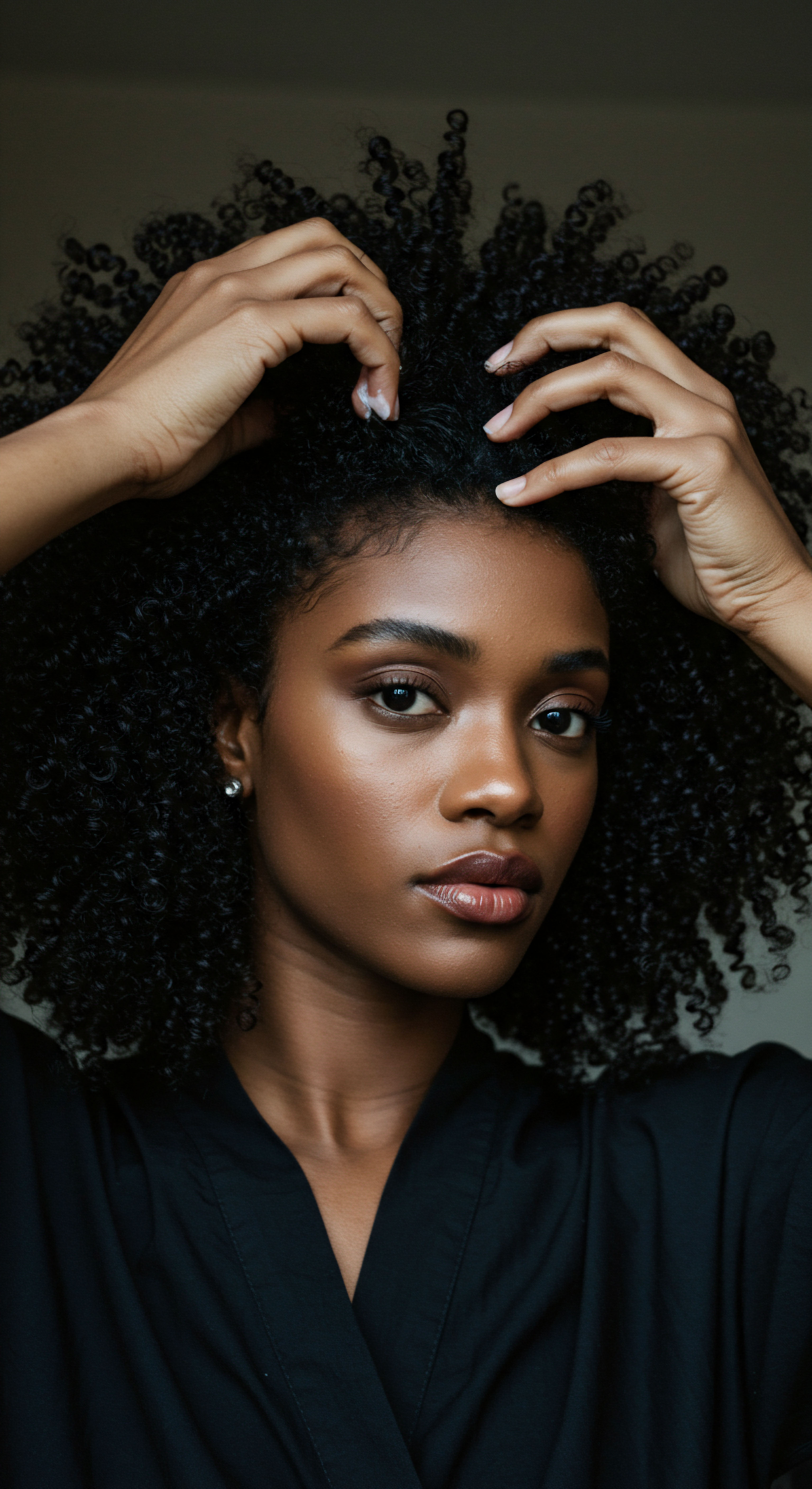
Hair Anatomy and Textured Hair Physiology
At the very heart of hair’s being lies the follicle, a tiny, yet extraordinarily active organ nestled within the scalp. Think of it as a miniature, self-sustaining ecosystem, a cradle where hair life begins. Each follicle is a complex structure, comprising the dermal papilla, a cluster of cells at its base responsible for supplying nutrients and oxygen, and the hair bulb, where cells divide rapidly to form the hair shaft. Surrounding these core elements are sebaceous glands, producing sebum, a natural oil that travels up the hair shaft, providing lubrication and a protective barrier.
For textured hair, the architecture of this follicle is particularly distinctive. Unlike the more circular follicles that produce straight hair, those yielding curls, coils, and kinks are typically elliptical or even ribbon-like in shape. This unique geometry dictates the hair’s curl pattern, causing the keratin proteins within the hair shaft to arrange themselves in a specific, uneven manner.
This inherent curvature means that sebum, the scalp’s natural moisturizer, often struggles to travel down the entire length of the hair strand, leaving the ends of textured hair prone to dryness. This structural reality underscores the critical role of systemic support, as external applications alone may not fully address the deeper requirements of these beautifully complex strands.

Textured Hair Classification and Structural Needs
While various classification systems exist for textured hair, from numbers and letters to more descriptive terms, their true value lies in recognizing the distinct structural needs each pattern presents. A tightly coiled strand, for instance, possesses more points of curvature, creating areas of inherent fragility where the hair is more susceptible to breakage. This increased vulnerability means that the foundational strength derived from within becomes even more paramount.
The internal state of our body provides the elemental building blocks for hair’s vitality.
The hair follicle, constantly undergoing cycles of growth, rest, and shedding, relies on a steady stream of resources to perform its functions optimally. When the body operates in a state of consistent hydration, these resources are more readily available, ensuring that the cellular machinery within the follicle can perform its work with efficiency. This internal environment, a well-balanced symphony of fluids and nutrients, contributes directly to the resilience and health of the hair emerging from the scalp, particularly for hair types that inherently face greater challenges in maintaining moisture.

Hair Growth Cycles and Internal Factors
The journey of a single hair strand is a remarkable biological narrative, moving through distinct phases:
- Anagen ❉ The growth phase, lasting from two to seven years, where cells in the hair bulb actively divide.
- Catagen ❉ A transitional phase, brief in duration, where growth ceases and the follicle prepares for rest.
- Telogen ❉ The resting phase, after which the old hair sheds, making way for a new one to begin its anagen journey.
Each phase demands energy and specific biological conditions. Systemic hydration, encompassing not just water intake but the body’s entire fluid and electrolyte balance, directly impacts the efficiency of these cycles. A body struggling with inadequate hydration may experience compromised blood flow, reduced nutrient delivery, and a less than ideal environment for cellular proliferation within the hair follicle.
This can lead to a shorter anagen phase, more hairs entering the resting phase prematurely, and ultimately, a perception of slower growth or increased shedding. The intrinsic well-being of the body, therefore, acts as a silent architect, guiding the very rhythm of hair’s life.

Ritual
Stepping beyond the elemental understandings of hair’s beginnings, we arrive at the practices, both deliberate and unconscious, that shape its daily existence. For textured hair, the rhythm of care often feels like a sacred practice, a dialogue between the individual and their strands. This section seeks to illuminate how our daily rituals, when informed by a deeper comprehension of systemic hydration, can unlock greater vitality for textured hair. It is here that the foundational science finds its application, offering guidance that resonates with the unique needs of curls, coils, and kinks, moving from theoretical knowledge to actionable wisdom.

Building Personalized Textured Hair Regimens
A truly personalized hair regimen extends beyond selecting products; it involves recognizing the interplay between external care and internal well-being. For textured hair, which naturally experiences challenges with moisture distribution along the shaft, the body’s internal water balance forms a crucial underpinning for effective external hydration. When the body is adequately hydrated, the scalp environment is more balanced, producing sebum that is perhaps more fluid and able to travel further, or at least supporting a healthier follicular base. This internal support allows topical conditioners, oils, and creams to work more effectively, sealing in existing moisture and providing a protective layer, rather than attempting to compensate for a fundamental lack of internal fluid.
Consider the daily choice of fluids. While a glass of water might seem a simple act, its collective impact on cellular function, including those cells responsible for hair formation, is significant. The nutrients we consume, transported via our circulatory system, depend on adequate fluid levels for efficient delivery to the hair follicle. This holistic approach means that the careful selection of a deep conditioner or a leave-in treatment is complemented by the consistent practice of internal hydration.
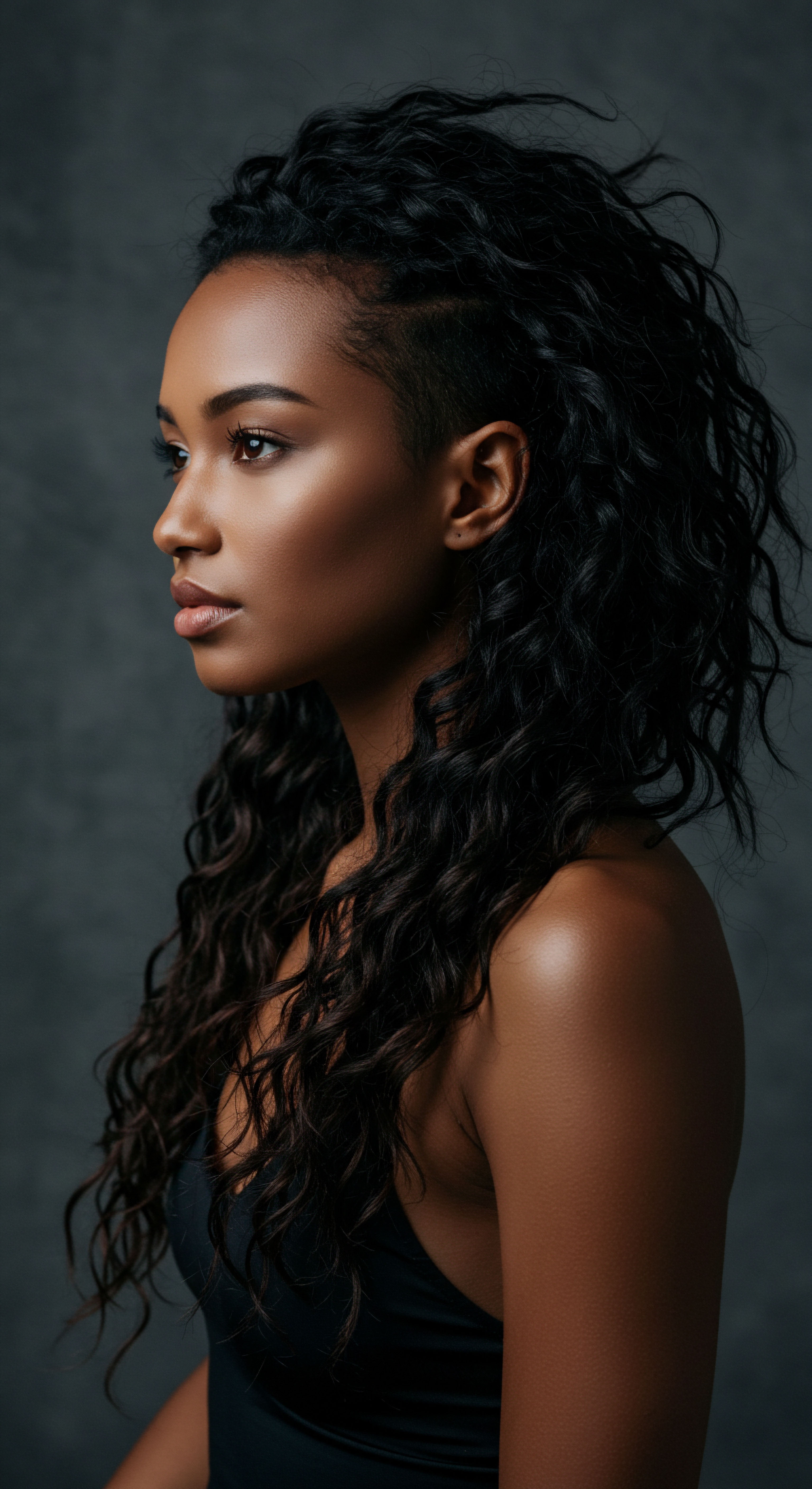
The Nighttime Sanctuary Essential Sleep Protection and Bonnet Wisdom
The hours of slumber offer a profound opportunity for the body to restore and repair. For textured hair, nighttime rituals hold a particular significance, often centered around protective measures like bonnets, scarves, or satin pillowcases. These external tools certainly guard against friction and moisture loss to fabric, yet their efficacy is amplified when paired with robust systemic hydration. During sleep, the body undergoes restorative processes, including cellular repair and hormone regulation, all of which are optimized in a well-hydrated state.
Nighttime hair protection gains amplified efficacy when supported by robust internal hydration.
A well-hydrated body facilitates better blood flow to the scalp even during rest, ensuring that the hair follicles continue to receive necessary oxygen and nutrients. This subtle, continuous nourishment throughout the night contributes to the hair’s overall resilience and its capacity to withstand the daily environmental stressors. The wisdom of the bonnet, therefore, extends beyond a mere physical barrier; it becomes part of a larger ecosystem of care that acknowledges the body’s inherent regenerative capabilities.
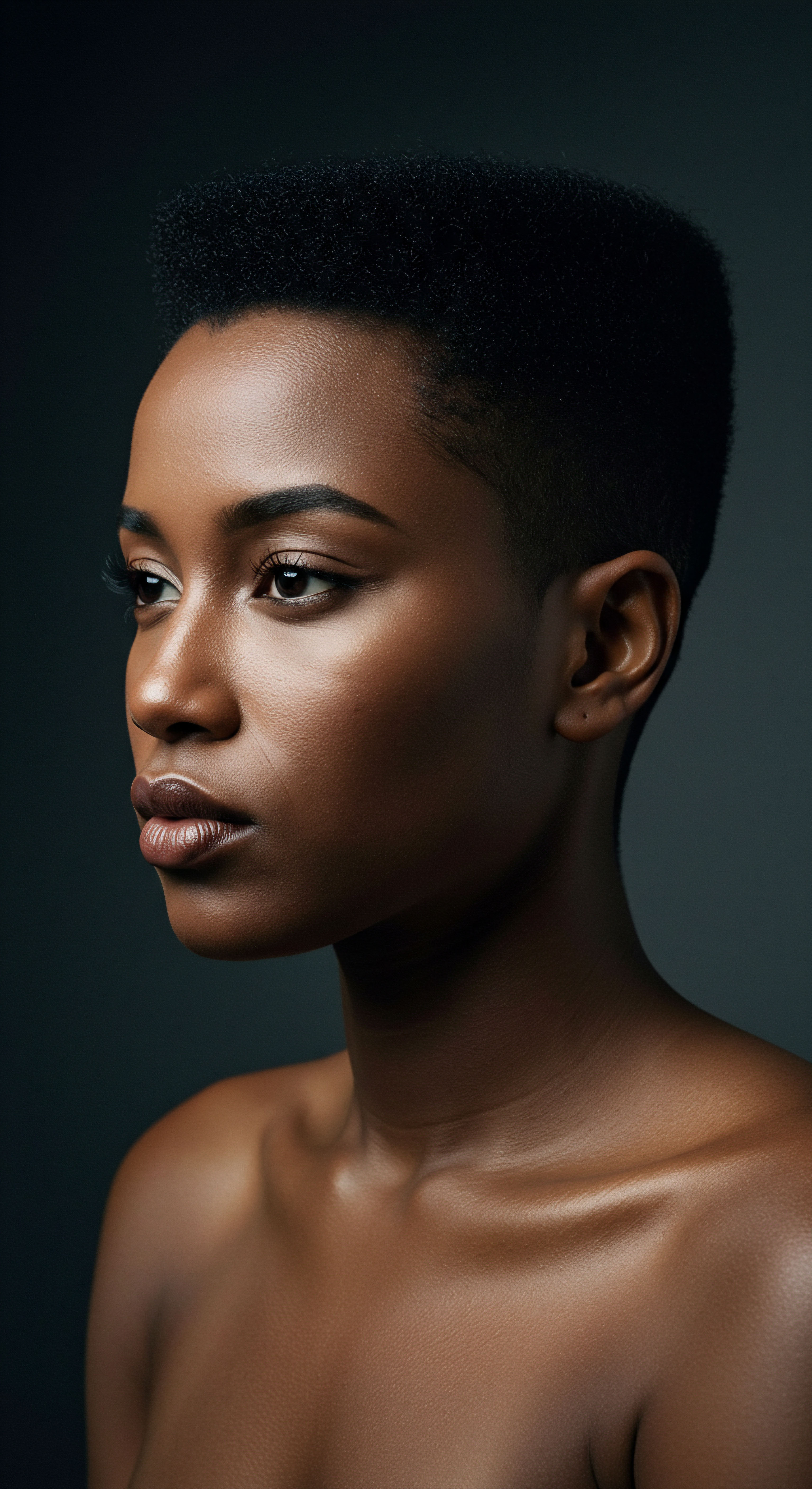
Ingredient Deep Dives for Textured Hair Needs
When examining ingredients for textured hair, our focus often gravitates towards humectants, emollients, and occlusives—substances that draw in, soften, and seal moisture. Yet, the true effectiveness of these external agents is tethered to the hair’s internal state. Ingredients like hyaluronic acid, glycerin, or aloe vera, which attract water, function best when there is sufficient moisture for them to draw upon, both from the environment and, indirectly, from the body’s internal water reserves.
Similarly, nourishing oils and butters create a protective shield, helping to prevent moisture from escaping the hair shaft. This protective layer is more impactful when the hair itself is structurally sound and well-supported from within. A follicle that has received consistent systemic hydration is better positioned to produce a strong, healthy strand, one whose cuticle layers lay more smoothly, inherently better at retaining moisture.
Consider a table illustrating common ingredients and their symbiotic relationship with internal hydration:
| Ingredient Category Humectants (e.g. Glycerin, Hyaluronic Acid) |
| Primary Function on Hair Draw moisture from air to hair |
| Systemic Hydration Connection Effective when surrounding environment and internal body have adequate water vapor. |
| Ingredient Category Emollients (e.g. Shea Butter, Jojoba Oil) |
| Primary Function on Hair Soften and smooth hair, reduce friction |
| Systemic Hydration Connection Hair shaft, strengthened by internal water, is more receptive to softening. |
| Ingredient Category Occlusives (e.g. Castor Oil, Petroleum Jelly) |
| Primary Function on Hair Form a barrier to prevent moisture loss |
| Systemic Hydration Connection Seals in moisture that has been delivered to the hair shaft from both internal and external sources. |
| Ingredient Category The synergy between internal hydration and external product application maximizes hair health. |

Textured Hair Problem Solving Compendium
Many common concerns for textured hair, such as persistent dryness, breakage, and lack of elasticity, often prompt a search for external solutions. While products certainly play a significant role, a deeper inquiry often reveals the subtle, yet powerful, influence of systemic hydration. When the body experiences even mild dehydration, its systems prioritize essential functions, sometimes diverting water away from less critical areas like hair production. This can result in hair that feels perpetually dry, appears dull, and lacks its characteristic bounce.
For example, persistent scalp dryness, a frequent complaint among those with textured hair, may stem not only from insufficient external moisturizing but also from an internally dehydrated state. A well-hydrated body supports the optimal function of sebaceous glands, helping to maintain a balanced scalp environment. Addressing these issues, therefore, becomes a multi-pronged endeavor, where the daily ritual of drinking sufficient water complements the application of nourishing scalp treatments.

Relay
How does the silent, ceaseless flow of life-giving water within our bodies truly orchestrate the vitality of each textured hair strand? This query guides us into a realm where the intimate dance between cellular biology, systemic function, and external appearance unfolds with compelling intricacy. Here, we delve beyond the readily apparent, seeking to illuminate the profound, often hidden, connections that link our deepest physiological processes to the very health and resilience of our hair. It is a space where scientific inquiry meets a reverence for the body’s wisdom, unveiling the multifaceted influences on textured hair.

The Science of Systemic Hydration and Follicle Biology
The hair follicle, a dynamic miniature organ, relies heavily on a consistent supply of nutrients and oxygen, delivered through a dense network of blood vessels. Systemic hydration is a fundamental determinant of blood volume and viscosity. When the body maintains optimal fluid balance, blood flows more freely, ensuring that these vital supplies reach the rapidly dividing cells within the hair bulb. Conversely, even mild dehydration can lead to a reduction in blood flow to peripheral areas, including the scalp, potentially diminishing the nutrient supply to the follicles.
Cellular hydration within the follicle itself is equally critical. Water is the solvent for all biochemical reactions, facilitating the transport of ions, proteins, and genetic material necessary for cell growth and differentiation. Without adequate cellular water, metabolic processes slow, and the structural integrity of the cells can be compromised.
This delicate balance directly influences the quality of the keratin proteins produced, which are the building blocks of hair. The shape and strength of the emerging hair fiber are thus intrinsically linked to the hydration state of the cells forming it.
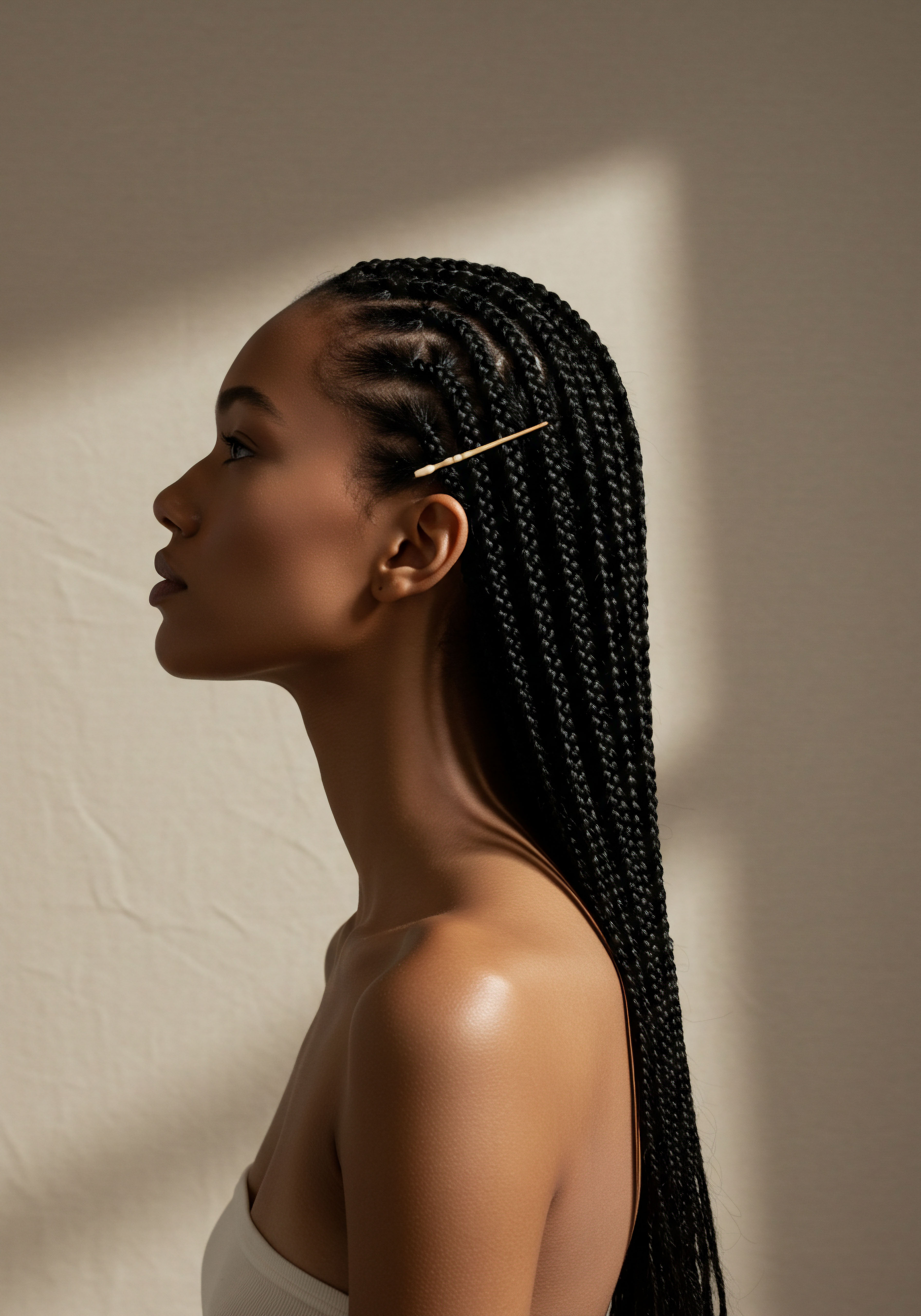
The Interconnectedness of Body Systems and Hair Vitality
Hair health is not an isolated phenomenon; it mirrors the overall health of the body. The circulatory system, as discussed, is a primary conduit, but other systems play equally significant roles, all influenced by hydration:
- Endocrine System ❉ Hormones regulate various aspects of hair growth, and their synthesis and transport are water-dependent. Dehydration can subtly disrupt hormonal balance, potentially affecting hair cycles.
- Digestive System ❉ Nutrient absorption, which directly fuels hair growth, requires sufficient water. A well-hydrated digestive tract efficiently breaks down food and absorbs vitamins, minerals, and amino acids.
- Immune System ❉ A robust immune system, supported by adequate hydration, helps keep the scalp free from inflammation and infections that could impede follicle function.
These systems work in concert, a testament to the body’s remarkable interconnectedness. When one system falters due to insufficient hydration, the ripple effect can eventually manifest in visible changes to hair quality.
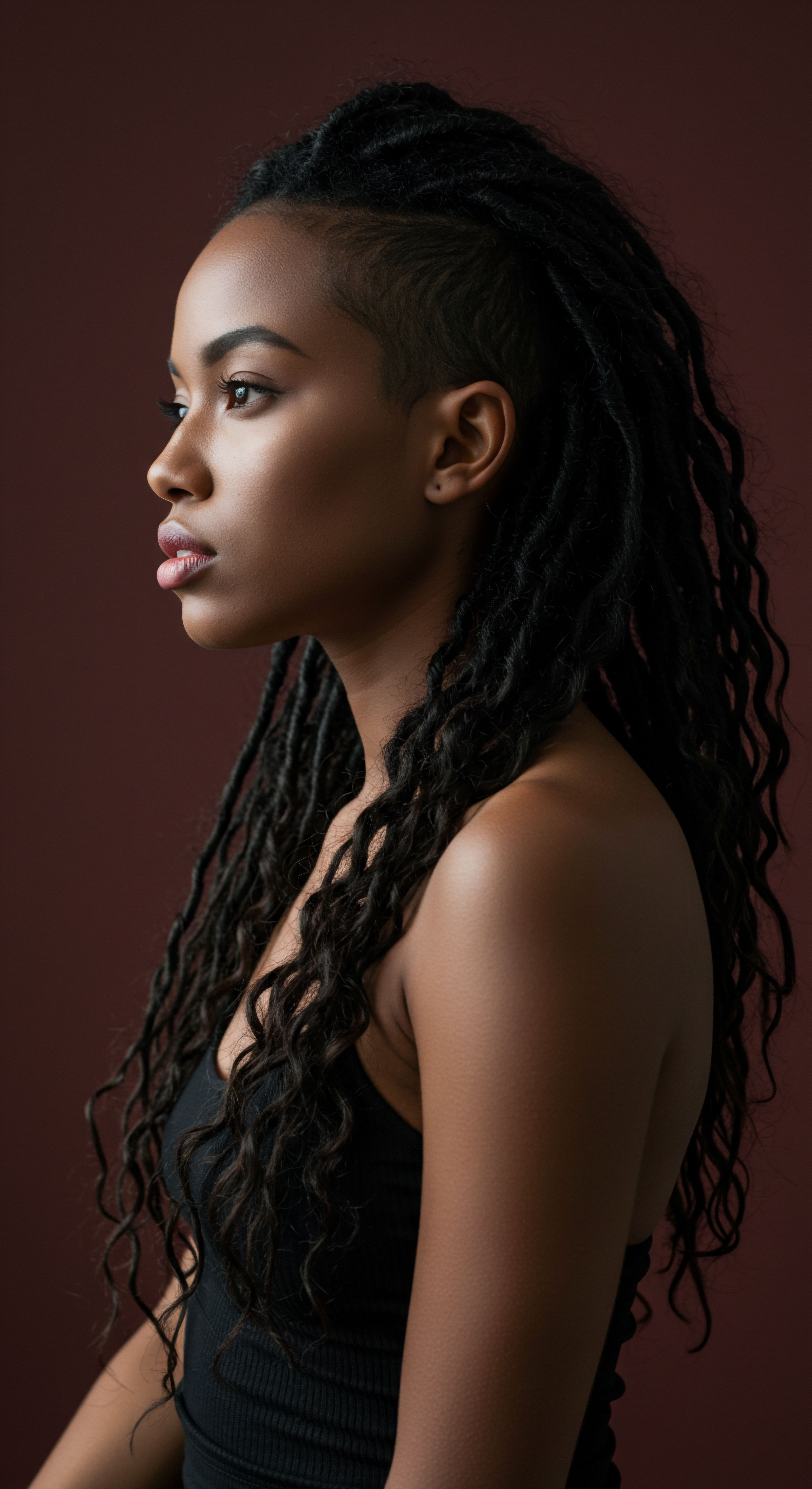
Nutrient Transport and Absorption to Hair Follicles
The very essence of hair growth hinges on the efficient delivery of specific micronutrients to the hair follicle. Water acts as the universal transport medium within the body, carrying vitamins, minerals, and amino acids from the bloodstream to the dermal papilla, where they are assimilated by the growing hair cells. For instance, iron, vital for oxygen transport, and zinc, crucial for cell division, rely on a well-hydrated circulatory system to reach their destination.
A fascinating aspect of this nutrient delivery lies in the observation that, while systemic hydration is undeniably important for overall physiological function, the direct impact of water within the hair shaft itself can be counterintuitive for certain hair types. Research from TRI Princeton suggests that for most straighter hair types, increased water content can paradoxically lead to increased surface roughness and reduced combability. However, this same research indicates that for very coily hair, increased water content might be beneficial, potentially reducing breakage and improving manageability.
This finding presents a unique point, highlighting that the relationship between water and hair is not monolithic across all textures, emphasizing the nuanced needs of highly coiled hair. The body’s internal hydration ensures the follicle receives its vital provisions, while the external interaction with water can be a more delicate balance depending on curl pattern.

Environmental Stressors and Internal Resilience
Our hair, particularly textured hair, constantly navigates environmental stressors such as sun exposure, pollution, and fluctuating humidity. While external protective measures are important, the hair’s inherent resilience against these factors is significantly bolstered by internal health. A well-hydrated body maintains healthier skin, including the scalp, which serves as the protective foundation for hair follicles.
Consider a table illustrating the subtle impact of environmental factors and internal resilience:
| Environmental Stressor UV Radiation |
| Impact on Hair Protein degradation, dryness, color fade |
| Role of Systemic Hydration Supports skin barrier integrity, aids cellular repair post-exposure. |
| Environmental Stressor Low Humidity |
| Impact on Hair External moisture loss, brittleness |
| Role of Systemic Hydration Ensures consistent internal water supply to hair follicles. |
| Environmental Stressor Pollution |
| Impact on Hair Accumulation on scalp, oxidative stress |
| Role of Systemic Hydration Aids in detoxification, supports healthy scalp micro-environment. |
| Environmental Stressor Internal hydration fortifies hair's natural defenses against external challenges. |
The very structure of textured hair, with its inherent dryness, makes it particularly sensitive to these external assaults. When the body is systemically well-hydrated, the hair that grows is more robust, its cuticle layers perhaps more resilient, better equipped to withstand the daily challenges posed by the world around us. This resilience, born from within, forms a quiet strength, allowing textured hair to maintain its unique beauty amidst diverse conditions.
The journey of textured hair vitality begins deep within the body’s fluid balance.

Reflection
The exploration into systemic hydration and its quiet influence on textured hair follicles reveals a truth both profound and deeply personal. It speaks to the wisdom held within our bodies, a silent understanding that true vibrancy often blossoms from the most elemental care. Our textured strands, with their unique contours and spirited forms, stand not as separate entities but as living extensions of our internal landscape.
To consider their well-being is to acknowledge the delicate balance of our entire being, inviting a more harmonious relationship with ourselves. The path to truly radiant textured hair, then, is not merely a regimen of external applications, but a gentle attunement to the rhythmic flow of life within, a quiet celebration of our inherent design.

References
- Robbins, Clarence R. The Chemical and Physical Behavior of Human Hair. Springer, 2012.
- Panahi, Yunes, et al. “Rosemary oil versus minoxidil 2% for the treatment of androgenetic alopecia ❉ A randomized comparative trial.” Skinmed 13.1 (2015) ❉ 15-21.
- Trueb, Ralph M. “Systemic causes of hair loss.” Journal of the German Society of Dermatology 8.11 (2010) ❉ 814-825.
- Gavazzoni Dias, Maria Fernanda. “Hair cosmetics ❉ an overview.” International Journal of Trichology 7.1 (2015) ❉ 2-15.
- Whiting, David A. Atlas of Hair and Nails. Churchill Livingstone, 2004.
- Chandrashekar, B.S. IADVL Textbook of Trichology. Jaypee Brothers Medical Publishers, 2018.
- Gupta, Shivani, et al. “Controversies of micronutrients supplementation in hair loss.” Cosmoderma 4.1 (2024) ❉ 1-6.
- Messick, Barbara, and Paul C. H. Li. “In Vivo Human Hair Hydration Measurements by Using Opto-Thermal Radiometry.” International Journal of Thermophysics 40.2 (2019) ❉ 1-11.
- Abdalghafor, Hanan, et al. “The Effect of Hydration on the Mechanical Behaviour of Hair.” Journal of Applied Polymer Science 130.3 (2013) ❉ 1640-1647.
- Dlova, Nonhlanhla C. et al. “The Genomic Variation in Textured Hair ❉ Implications in Developing a Holistic Hair Care Routine.” Cosmetics 11.1 (2024) ❉ 1-17.